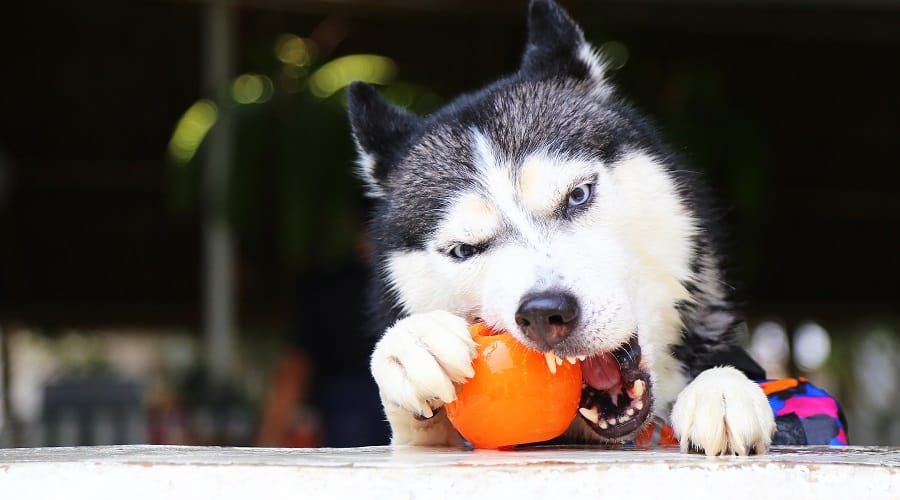Dog Whining Decoded: What Your Pup’s Whimper Really Means
When you purchase through links on our site, we may earn a commission. Here’s how it works.
Every whine is a message, and some could save your dog’s life. Your dog’s whimper isn’t just background noise; it’s their language.
Table of Contents
Sometimes it’s a sweet “I missed you” after a long day. Other times, it’s a canine SOS telling you something’s wrong. The problem? To our ears, they often all sound the same.
I’m breaking it down so you’ll know exactly what each whine means. From the happy greetings that make your heart melt to the pain signals you should never ignore. By the end, you’ll be able to listen to your dog and think, “I know exactly what you’re saying.”

Why Does My Dog Whine All the Time? 5 Reasons
If you’ve ever thought, “Why does my dog whine all the time?” or felt frustrated with a dog constantly whining, you’re not alone. Whining is a dog’s way of speaking, a mix of emotion, request, and sometimes warning.
The challenge is that every whine, from joy to pain, can sound surprisingly similar to us. Here’s how to tell them apart.
1. The “I Love You” Whine (Greeting)
This is the happy soundtrack of reunion. You walk through the door, and your dog greets you with a high-pitched whimper, tail wagging like a metronome on overdrive. It’s their way of saying, “You’re back, my world is right again.”
This type of whining is harmless, even endearing, but if it escalates into jumping, barking, or overexcitement, a calm greeting can help keep it under control.
2. The Nervous Whine (Anxiety)
When anxiety hits, your dog’s whine changes. It’s often paired with restless pacing, drooling, or chewing on things they shouldn’t.
Dogs with separation anxiety are classic nervous whiners; they start vocalizing when they sense you’re about to leave or as soon as you’re gone. Unlike a happy greeting, this whine has tension in it, and ignoring it can make the problem worse over time.
3. The “Look at Me” Whine (Attention-Seeking)
Every dog parent knows this one: you’re trying to work, and your dog sits inches away, staring with laser focus and letting out a soft, persistent whimper. It might mean they need to go outside, want food, or just want your attention.

The tricky part is not rewarding the whining itself. Instead, wait for a moment of quiet before giving them what they want, so they learn silence works better.
4. The “You’re the Boss” Whine (Appeasement)
This is a low, submissive sound, often accompanied by a tucked tail, lowered head, or a full belly-up display. It’s your dog’s way of saying, “I’m no threat, you’re in charge here.”
You’ll see this with people, other dogs, or even in response to a loud noise. While it’s not harmful, building your dog’s confidence through positive interactions can reduce how often it happens.
5. The “Ouch” Whine (Pain/Injury)
This is the one you can’t afford to ignore. A pain whine is often sharper, more urgent, and triggered when your dog moves in a certain way or you touch a specific spot.
If your dog suddenly starts whining and it’s out of character, especially if they also limp, refuse food, or seem withdrawn, treat it as a red flag. Call your vet as soon as possible to rule out injury or illness.
If dogs could talk, oh, the tales they would tell. The truth is that dogs communicate in many ways, and one of the more vocal ways they communicate, both with humans and other animals, is through whining. But if it’s sudden, unusual, or paired with discomfort, skip the training tips and get your dog checked by a vet first.
Puppy Whining: Why It’s Different
Puppies are professional whiners; it’s one of the first sounds they learn to make. In those early weeks, whining is how they tell their mother they’re cold, hungry, or need comfort. When you bring a puppy home, you become that comfort source, so the habit comes with them.
A new environment, the loss of their littermates, and learning to be alone at night can all turn up the volume on their whimpers. Nighttime puppy whining is especially common in the first few days, and while it can tug at your heart, rushing in too quickly can reinforce the behavior.

The key is finding a balance, responding to genuine needs (like bathroom breaks) while slowly teaching your puppy that quiet, calm behavior earns attention.
Are Some Dogs Naturally More Whiny?
Just like some people are more talkative than others, certain dogs are naturally more vocal, and whining is part of their personality. Breeds like Huskies, Beagles, and Dachshunds are famous for “talking” to their owners, using a mix of howls, barks, and whines to share their every thought.
These vocal tendencies are often hardwired, the result of generations of breeding for hunting, herding, or close human companionship. But even within the same breed, individual personality plays a huge role. A confident, laid-back dog might rarely whine, while a sensitive or high-energy one seems to have a running commentary.
If your dog’s whining is just part of who they are, training can help set boundaries, but don’t expect to silence them completely. In many cases, learning to interpret their “language” is a better goal than trying to erase it.
Whining vs. Howling vs. Crying: How to Tell the Difference
To human ears, whining, howling, and crying can blur together, but in dog language, they send very different messages.
- Whining is usually a short, higher-pitched sound that signals a request, emotion, or discomfort.
- Howling tends to be longer and more drawn-out, often tied to instincts from their wolf ancestors; it can mean anything from “I’m lonely” to “I hear another dog in the distance.”
- Crying, meanwhile, is the most urgent and emotional of the three; it’s often paired with physical distress signals like shaking, limping, or avoiding touch.
The easiest way to tell them apart is to watch the body language: a whining dog may pace or look toward you for help, a howling dog often throws their head back and lets the sound roll, and a crying dog might stay still, withdraw, or avoid eye contact altogether.
Understanding these nuances helps you respond in the right way, whether that’s a quick comfort, a distraction, or a call to the vet.

How To Stop A Dog From Whining
The key to stopping whining is knowing why it’s happening in the first place, because a fix that works for attention-seeking won’t help a dog in pain, and vice versa.
Before anything else, rule out injury or illness. If your dog’s whining is sudden, unusual, or paired with limping, stiffness, or changes in appetite, skip the training plan and get them checked by a vet. The fastest way to stop medical whining is to solve the underlying problem.
1. Stopping Appeasement & Anxiety Whining
I’m tackling these two types together because there’s some common ground in both instances: confidence. Often, when your pup whines to please and is in a submissive state, or when they whine about showing anxiety, it comes back to your dog’s lack of confidence.
Increase their confidence with reward treats while showing affection and rewarding confident, focused behavior. Do not use physical or verbal punishment, as it will counteract the positive effects you’ve worked so hard for. As their confidence grows individually, you should notice less whining in these situations.
2. How To Stop Attention Whining
This might be the toughest type of whining to fix. Is your dog whining to let you know they need to go out, or simply because they’re demanding your attention? Either way, it’s important that while your dog is in the act of attention whining, you do not acknowledge the behavior.
Don’t get up to let them out, don’t pet them, and don’t even look in your dog’s direction while they’re in the act of whining for attention. Even telling them to be quiet or scolding them is attention and will be perceived as a positive response to their actions.
Once your dog has stopped whining, take them out immediately or reward them with attention so they learn to associate being quiet with the attention they desire.

I know ignoring is hard, so I suggest making sure your pup gets plenty of exercise and mental stimulation. Playtime or food-filled Kongs work wonders to keep them from being so needy (trust me, I know from experience).
3. How To Quit Greeting Whining
Maybe it’s just us, but if our pup lets out a few cute whimpers to welcome us home, then we’re okay with that. They’re excited, we’re excited, and their whining isn’t terrible when it’s so darn cute, right?
If, however, their “hellos” are getting a little out of hand, try greeting your pup with a calmer tone and demeanor. Your pup will likely mirror your actions and will be a lot less likely to get rowdy (and subsequently whiny).
Distracting calmly with a command (like “sit”) as you enter will also help keep your pup focused on a task (and treat reward) rather than their excitement for you coming home.
4. Stopping Crate or Nighttime Whining
Few things test a dog owner’s patience like the sound of whining in the middle of the night or during crate time.
Whining in the crate or at night can be about physical needs, discomfort, or just wanting company. First, make sure your dog has gone to the bathroom, has comfortable bedding, and isn’t too hot or cold.
If those needs are met, reinforce quiet behavior in the crate with treats or praise, starting with short crate sessions and working up. For nighttime whining outside the crate, keep bathroom breaks calm and business-like, then return to bed so your dog learns that night is for sleeping, not socializing.
3 Common Owner Mistakes That Make Whining Worse
Sometimes we accidentally teach our dogs to whine more without even realizing it. The key is to respond consistently and match your reaction to the actual reason behind the whine.
1. Rewarding The Whine
The most common mistake is rewarding the noise. Even negative attention, such as scolding or “shhh”-ing, can reinforce the behavior because, to your dog, attention is attention.
2. Responding Inconsistently
Inconsistent responses are another big problem; if you ignore whining one day but give in the next, your dog learns to keep trying until they get what they want.
3. Misreading The Whine
Misreading the cause is also a common pitfall. For example, treating anxiety whining like attention whining can make a nervous dog feel even more insecure.
Why Senior Dogs Whine More
As dogs age, their reasons for whining can shift and often become more frequent. Older dogs are more prone to chronic pain from arthritis, dental problems, or other health conditions, and whining can be their way of letting you know they’re uncomfortable.
Cognitive decline, similar to dementia in humans, can also cause increased vocalization; a senior dog may feel disoriented, anxious, or confused, especially at night. Hearing or vision loss can make them more easily startled, leading to anxious whining in situations they once handled calmly.

If your senior dog is suddenly more vocal, it’s worth talking to your vet about pain management, lifestyle adjustments, or calming strategies. Even small changes, like orthopedic beds, night lights, or more frequent bathroom breaks, can help your older pup feel more comfortable and reduce the urge to whine.
When to Call the Vet Immediately
While many types of whining are harmless or can be resolved with training, some are a clear signal that your dog needs medical attention, and fast. Call your vet right away if your dog’s whining is sudden, intense, or paired with any of these signs:
- Limping or reluctance to move
- Refusing to eat or drink
- Shaking, trembling, or weakness
- Difficulty breathing
- Vomiting or diarrhea
- Yelping or whining when touched in a certain spot
- Unusual stillness or withdrawal from interaction
Persistent whining from a normally quiet dog can also be a red flag. Trust your instincts; you know your dog’s normal behavior better than anyone. When in doubt, it’s always safer to get them checked out, because catching a medical issue early can make all the difference.
When Whining Is Actually Helpful
Not all whining is bad. In fact, sometimes it’s a good thing. Whining can be your dog’s way of alerting you to something important, like needing to go outside, feeling unwell, or noticing a strange sound at the door.
Some service dogs are even trained to whine as a signal for specific tasks, like alerting their owner to a medical emergency. In these cases, the whining is purposeful communication that you want to encourage, not suppress.
The trick is learning to tell the difference between helpful whining and the kind that’s just habit or manipulation, so you can respond appropriately without sending mixed signals.
My Experience: From Constant Whining to Calm Communication
My older dog, Bonkers, has never been much of a whiner. He’s the strong, silent type. But when we adopted Chips, our young Dachshund, I was in for a whole new experience.
From the moment she came home, Chips seemed to whine about everything. It wasn’t just when she wanted food or attention; sometimes she’d pace and whimper for no obvious reason.
After talking to our vet and doing some reading, I learned her whining was anxiety-related. She was in a brand-new environment, away from everything familiar, and she simply didn’t know what to expect. She’d had five homes in her first six months of life, so she was bound to be anxious.
Over time, with patience and confidence-building exercises, rewarding calm behavior, keeping a steady routine, and giving her plenty of positive interactions, she began to settle down.

Photo by Emma Braby for Canine Journal, © Cover Story Media, Inc. 2024
These days, Chips rarely whines. In fact, the only time she does is when she needs to go outside to pee, and honestly, I’m grateful for it. It’s become a clear, useful signal instead of a constant background noise, and it’s a reminder of just how far she’s come.
Need Training Help?
If you need some help training your dog, we’ve got multiple options for you. If reward-based training isn’t working for you, try training your dog without treats. And if you’re still struggling, consider Doggy Dan’s online training courses.
Dog Constantly Whining? FAQs Answered
Got more questions about dog whining? You’re not alone, because this is one of the most common (and confusing) behaviors dog owners deal with. Below, I’ve answered some of the top questions trainers and vets hear all the time.
If your question isn’t here, drop it in the comments, as we’d love to help (and other readers might be wondering the same thing).
Why Does My Dog Whine All The Time?
Dogs whine to communicate emotions or needs; it could be excitement, anxiety, a request for attention, or a sign of pain. If the whining is sudden or unusual, especially with other symptoms, contact your vet before trying to correct the behavior.
What Does It Mean When My Dog Constantly Whines?
Constant whining can signal boredom, stress, discomfort, or a health issue. Pay attention to when it happens, during alone time, mealtimes, or rest, so you can pinpoint the cause and address it effectively.
How Can I Get My Dog To Stop Whining At Night?
First, check for physical needs like a bathroom break, hunger, or discomfort. Then, set a calm bedtime routine and avoid giving extra play or attention during the night, as it can encourage more whining.
Should You Ignore A Dog Whining For Attention?
Yes, in many cases, but only if you’re certain it’s attention-seeking. Don’t ignore whining caused by pain, anxiety, or distress, as those situations require immediate care and comfort.
Are Certain Dog Breeds More Likely To Whine?
Yes. Huskies, Beagles, and Dachshunds are among the breeds known for being more vocal. However, personality plays a big role, so even within the same breed, some dogs will be much quieter than others.
Simple Daily Routines That Keep Your Dog Thriving
A calm, content dog starts with the basics, and a high-quality diet is at the top of the list. The right nutrition fuels their energy, supports their immune system, and keeps them feeling their best. Just as important are annual vet checks, which help catch health issues early before they turn into bigger problems.
Comfort matters too, so a supportive, cozy dog bed can make a world of difference, especially for older dogs or those with joint pain. And don’t forget regular exercise, from daily walks to playtime in the yard, to keep your dog physically fit, mentally stimulated, and emotionally balanced.
Tell Us About Your Whiny Pup! We’d love to hear your stories, whether your dog’s whine melts your heart, makes you laugh, or keeps you guessing. Share your experiences in the comments and let other dog lovers know they’re not alone!



